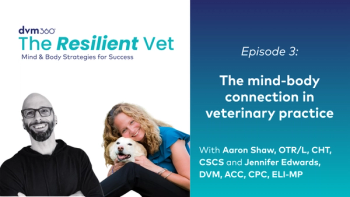
ECG remains key diagnosticfor cardiomyopathy in cats
Q. Could you provide a brief review of car Could you provide a brief review of cardiomyopathies in cats?
Q. Could you provide a brief review of car Could you provide a brief review of cardiomyopathies in cats?
Cardiomyopathies affect heart muscle. Changes in the heart muscle leads to loss of function and thereby clinical disease can occur. There are primary idiopathic forms of cardiomyopathy as well as secondary forms of cardiomyopathy that occur as a result of an underlying systemic-metabolic problem.
Cardiomyopathies may be classified according to the structural heart changes that occur. In Persian's and Maine Coon's, a familial predisposition to hypertrophic cardiomyopathy has been identified. The secondary forms do often occur in cats, especially in older cats.
Good examples of secondary cardiomyopathies are dilated cardiomyopathy in association with taurine deficiency and cardiac hypertrophy that occurs in association with hyperthyroidism or hypertension.
The most frequent form of cardiomyopathy in cats is the hypertrophic form. In hypertrophic cardiomyopathy, the ventricular walls begin to hypertrophy and the heart muscle fibers become disorganized. With hypertrophy, the heart can no longer relax and the ventricular lumen is decreased.
Hypertrophic
Ischemia of the heart muscle also occurs quite common with infarction. There is also a specific manifestation of hypertrophic cardiomyopathy termed hypertrophic obstructive cardiomyopathy.
In these cases, there is dynamic obstruction of the aortic outflow tract during systole, leading to a situation similar to aortic stenosis. It is possible that this dynamic aortic stenosis leads to secondary generalized ventricular hypertrophy.
Restrictive and intermediate forms of cardiomyopathies are also recognized. Their classification does pose some challenges as there is inconsistency in nomenclature. Restrictive cardiomyopathy should probably be limited to those cases where severe fibrosis of the endocardium and subendocardium has occurred. The hearts are stiff and non-compliant, and as a result diastolic dysfunction exists with an inability to fill the ventricle properly.
Much of the normal cardiac muscle architecture is deformed. Restrictive cardiomyopathy may be secondary to a previous bout of myocardial inflammation, although it may also just represent an end stage form of cardiac disease where ischemia and infarction has led to widespread scar tissue formation in the myocardium.
Intermediate cardiomyopathy is somewhat more difficult to define. It usually refers to cardiomyopathy that has features of both dilated and hypertrophic cardiomyopathy, that is, hypertrophy of the ventricular walls with chamber dilation and normal to slightly decreased contractility.
Intermediate cardiomyopathy
Whether intermediate cardiomyopathy represents a discrete disease process or is a stage in the progression of cardiomyopathy from hypertrophy to dilation is uncertain.
With the advent of nutritional supplementation of taurine, dilated cardiomyopathy has become a relatively uncommon diagnosis in cats. There are still occasional cases seen and taurine supplementation should be tried in these affected cats.
Treatment focuses on relieving signs of congestive heart failure with diuretics and possibly ACE inhibitor. Arrhythmias occur frequently. With supraventricular tachycardias, digoxin becomes a therapeutic option.
History and clinical findings are not useful in differentiating between the various forms of cardiomyopathy since they tend to be similar. Clinical manifestations, when present, are a reflection of heart failure, arrhythmias, conduction abnormalities, or as a result of thromboembolism.
Differentiating
Physical examination may raise the possibility of secondary cardiomyopathy by finding a palpable thyroid nodule (thyrotoxic cardiomyopathy), small kidneys (hypertensive cardiomyopathy) or retinal degeneration (taurine-deficient dilated cardiomyopathy).
The natural progression of these various cardiomyopathies is variable so that it is possible for cats to remain asymptomatic for prolonged periods of time. Many times heart disease is detected on routine physical examination without overt clinical signs being noted. It is uncommon for cats to have a slowly progressive course as is seen with most dogs with congestive heart failure. It is also uncommon for cats to cough with cardiomyopathy, even when they have significant cardiomegaly and/or pulmonary edema. Sudden death can occur in some cases without prior signs of cardiac disease. In some instances, owners will detect decreased exercise tolerance and a tendency for a cat to open mouth breath after minor exercise before development of congestive heart failure.
Cardiovascular examination can detect the presence of heart disease, though it too can rarely differentiate between the various forms of cardiomyopathy. Examination of the cat should begin with careful inspection of the cat at rest. Abnormal breathing patterns both in regard to the respiratory rate and respiratory character may be noted. The area of the jugular vein should be examined for possible distension or a jugular pulse.
The neck should also be palpated as well for the presence of a thyroid nodule. The femoral pulses should be palpated, and in most cases of cardiomyopathy, they should be fairly normal.
With arrhythmias, pulse deficits may occur. With low output heart failure, and especially with dilated cardiomyopathy, pulses may be weak. If thrombus is present, pulses to one or both rear legs are poor to absent. In addition, the paw pads are pale or cyanotic. Cats rarely cough or have ascites in association with cardiomyopathy. Findings will depend on whether or not heart failure is present.
Without heart failure, at least a heart murmur should be present, usually with the point of maximal intensity near the left parasternal region. The murmur can be of variable intensity with it being loudest when the cat is excited. This is typical for hypertrophic obstructive cardiomyopathy. Gallop rhythms are not uncommon. They are a result of abnormal systolic filling such as occurs with dilated cardiomyopathy or atrial contraction in association with a stiff ventricle.
With heart failure, auscultation can reveal crackles with pulmonary edema, although this is less commonly the case in cats than in dogs. Even with severe dyspnea as a result of pulmonary edema, at times it can be difficult to auscult the sounds typically thought to be present with edema. Muffling of heart sounds in cats is almost always a result of pleural effusion. In dogs, one would need to consider pericardial effusion as well, however, in cats most cases of pericardial effusion are also secondary to cardiomyopathy.
Electrocardiography can be helpful in the evaluation of a cat with suspected cardiac disease. The primary findings that can point toward a cardiomyopathy are enlargement patterns on the ECG, conduction disturbances and the identification of arrhythmias. It generally is not possible to differentiate the various forms of cardiomyopathy based on only the ECG findings.
Evaluating cardiac disease
Enlargement patterns in cats are mainly comprised of two ECG changes. An R-wave that exceeds 0.9 mV suggests heart enlargement. Less commonly a prolongation of the QRS interval will be seen (>0.045 seconds). A cranial axis deviation pattern is also typical in cardiomyopathy. This is reflected in a positive R-wave in Lead I and deep S-waves in Leads II, III and aVF. This may be an indicator of a left anterior fascicular block or may merely reflect a left ventricular enlargement pattern. If Lead I is negative (deep S wave) along with leads II, III, and aVF then this can be a sign of right ventricular enlargement and heartworm disease needs to be considered.
Several conduction disturbances can be seen with feline cardiomyopathy. One of the more common conduction disturbances is third degree atrioventricular block.
Conduction disturbances
Third degree atrioventricular block may be caused by the pronounced thickening of the intraventricular septum in which the atrioventricular node resides. This may be suspected whenever a cat has a heart rate that is very slow (<120 beats per minute) and needs to be confirmed with an ECG. Generally, cats do not show the typical signs that dogs with third degree atrioventricular block will show such as syncope or episodic weakness because the intrinsic heart rate of the ventricle in cats is sufficiently high enough to take over for the normal sinus rhythm and allow the cat to function without clinical signs even with this advanced conduction problems. Third-degree atrioventricular block will also be seen commonly in older cats as a result of fibrosis of the atrioventricular node.
Many atrial and ventricular arrhythmias can occur with cardiomyopathy. The most common ventricular arrhythmia is premature ventricular complexes. A paroxysmal or sustained ventricular tachycardia is rarely seen. Supraventricular arrhythmias do occur, but are not common. Atrial fibrillation will be seen and must be considered to be associated with a poor prognosis. Atrial fibrillation usually only develops with massive left atrial enlargement. This tachycardia further compromises ventricular filling and also seems to be associated with a higher risk for thromboembolic disease.
Echocardiography is the primary diagnostic procedure for diagnosing cardiomyopathy in cats. Echocardiography detects the presence of early or advanced heart failure by detecting the presence of atrial enlargement. It also allows differentiation of the various forms of cardiomyopathy through assessment of ventricular dimensions as well as contractility.
ECG primary diagnostic
The 2-D echocardiographic views can also document the presence of left ventricular outflow tract obstruction. Advanced cardiac hypertrophy is easy to document on echocardiography. Septal or left ventricular free wall measurements of greater than 5 mm in diastole are consistent with left ventricular hypertrophy. With hypertrophic cardiomyopathy, reduction of the size of the left ventricular lumen will be seen. Contractility will be normal or increased in most instances.
The differentials for these findings include primary hypertrophic cardiomyopathy and hypertension, and hyperthyroid heart disease. When hypertrophy is detected on an echocardiogram, a blood profile that includes thyroid testing is indicated. Since hypertension is almost always secondary to either hyperthyroidism or chronic renal failure in cats, the blood work will be able to identify risk factors for hypertension. Ideally, blood pressure should be measured using either Doppler or oscillometric technology.
Echocardiography also allows the diagnosis of hypertrophic obstructive cardiomyopathy as well as systolic anterior motion of the mitral valve. Left atrial enlargement is indicative of beginning pulmonary congestion and may be a precursor to heart failure. In addition, thrombi can occasionally be seen in the left atrium. Occasionally, a swirling effect termed "smoke" can be seen in the left atrium. This is thought to be a sign of pooling of blood in the left atrium and may also be a marker of impending thromboembolism.
Dilated cardiomyopathy is also relatively easy to diagnose by echocardiography. Dilated cardiomyopathy tends to involve both the right and left ventricle. Both ventricles tend to be dilated with very poor contractility and thinning of the ventricular walls. Biatrial enlargement and pleural effusion are commonly found and sometimes pericardial effusion.
The more difficult echocardiographic diagnoses to make are restrictive and intermediate cardiomyopathy. These tend to have a combination of findings that are not consistent with the diagnosis of hypertrophic cardiomyopathy or dilated cardiomyopathy but are associated with significant atrial enlargement.
Restrictive and intermediate cardiomyopathy
The wall thicknesses of the left ventricle are often near normal or only mildly thickened. The ventricular lumen tends to be mildly dilated. Contractility tends to be in the normal range. In restrictive cardiomyopathy, contractility can be quite reduced and the endomyocardium can be quite bright on echocardiography. It is quite possible that these forms of cardiomyopathy represent a spectrum of changes so that they often do have features of both dilated and hypertrophic cardiomyopathy.
Treatment should attempt to control the signs of clinical heart disease as well as prolong the lifespan of the cat. It is uncertain whether any of the treatments currently available definitely prolongs the cat's lifespan.
Treatment
It is also uncertain whether asymptomatic animals benefit from early intervention with cardiac medications. Controlling the signs of heart disease does tend to be possible with a wide variety of medications. Treatment for cardiomyopathy varies depending on the type of cardiac muscle disease present, at least in regard to maintenance therapies.
The treatment for acute heart failure tends to be independent of the form of cardiomyopathy present. The cats with acute heart failure tend to present in severe respiratory distress and can easily decompensate. Initial management focuses on managing the dyspnea. The dyspnea can be from pleural effusion, pulmonary edema or a combination of these two.
Minimizing stress in these cats is vital and often too much intervention by the veterinarian early on can have a negative effect on the cat's condition. Initially placing the cat in an oxygen cage is recommended to allow them to calm down from the trip to the veterinary office as well as to improve oxygenation. An oxygen cage also has the advantage of muffling upsetting noises found in most veterinary practices. If significant pleural effusion is present, thoracocentesis should be considered. Since these cats tend to be in very poor condition, it often is possible to perform this without sedation or local anesthesia.
Medications should be started immediately on initial presentation. Furosemide (2-4 mg/kg intramuscularly or intravenously) can be administered; although the benefits of intravenous administration (more rapid onset of action) must be weighed against the risk associated with the restraint necessary to place an intravenous catheter. Nitroglycerine ointment (2%) can also be administered and is appropriate for emergency care. In most cats one-fourth inch of ointment is applied to an area with minimal hair (inside of an ear or inner thigh) every six to eight hours. After 48 hours, it is thought that animals become refractory to the effects of the nitroglycerine ointment.
Start meds immediately
Nitroglycerine ointment should not contact bare skin of people. It will be absorbed and a glove should be worn when applying nitroglycerine ointment. Nitroglycerine ointment also has the advantage of having some antithrombotic effects that can be helpful in cats with cardiomyopathy.
In cats it can at times be difficult to tell the difference between an animal suffering from acute heart failure and one suffering from an acute asthma attack. In those cases where the two cannot be differentiated and in which it is considered too risky to the animal to take immediate thoracic radiographs, furosemide, nitroglycerine and medications for asthma should be administered.
Asthma treatment with injectable aminophylline (4 mg/kg intramuscularly) is usually adequate. Corticosteroids such as dexamethasone (0.25 to 1 mg/kg intramuscularly) are also commonly used to treat asthma but this could be deleterious to the heart in cats. The cat is placed in a cage (preferably with supplemental oxygen) to rest. After the cat has stabilized, it is then possible to perform diagnostic procedures (thoracic radiographs, ECG, echocardiogram) as needed to establish a definitive diagnosis.
Chronic therapy is directed at controlling signs of heart failure and ideally to slowing down progression of the disease. Therapy for heart failure is relatively the same, independent of the form of cardiomyopathy present. The therapies directed at slowing progression can vary between the various forms of cardiomyopathy.
Diuretics are needed to control the signs of pulmonary congestion that occur with cardiomyopathy. The most commonly used diuretic is furosemide (1-2 mg/kg once to twice daily). For, most cats a furosemide dose of 2 mg/kg twice daily should not be exceeded. Dehydration can easily occur. In addition, furosemide may lead to potassium depletion, so electrolyte and kidney values should be checked routinely.
In those cases where furosemide alone without or with addition of an ACE inhibitor cannot control pulmonary congestion, addition of a second diuretic should be considered, such as spironolactone or spironolactone/chlorothiazide combinations. The diuretic dose is usually 1-2 mg/kg once or twice daily. These diuretics are potassium sparing and are probably not as potent as furosemide. Diuretics are titrated to effect, that is until signs of congestive heart failure are controlled.
ACE inhibitors have an important function in the treatment of heart failure. Their use in dilated, restrictive and intermediate cardiomyopathy is usually not contraindicated. In hypertrophic cardiomyopathy, there are theoretical drawbacks for use of ACE inhibitors. ACE inhibitors are arterial and venous dilators. With the arterial dilation, pressure downstream from the heart should be reduced. In hypertrophic cardiomyopathy, especially if hypertrophic obstructive cardiomyopathy is present, this effect could worsen the prolapse of the mitral valve (less pressure downstream counteracting the tendency of the mitral valve to move into the outflow tract). ACE inhibitors do have a positive influence in cats with hypertrophic cardiomyopathy and refractory heart failure. The dosage is 0.25 to 0.5 mg/kg of enalapril or benazepril daily. Renal function should be monitored when these medications are used - generally check BUN, serum creatinine and serum potassium values three to five days after starting an ACE inhibitor and again 10-14 days later to make sure that azotemia does not occur.
ACE inhibitors
Beta blockers play an important role in the management of cardiomyopathies, especially hypertrophic cardiomyopathy and hypertrophic obstructive cardiomyopathy. Their role in dilated cardiomyopathy, restrictive cardiomyopathy, and intermediate cardiomyopathy is usually limited to control of arrhythmias, specifically supraventricular tachycardias (atrial fibrillation, atrial tachycardia, and frequent atrial premature contractions) or ventricular tachycardia.
Beta blockers
In hypertrophic cardiomyopathy, beta blockers slow down the heart rate which prolongs diastole, an important goal in management of this disease. This increases coronary blood flow and thereby reduces myocardial ischemia.
Oxygen requirements are also reduced by reducing heart rate, contractility, systolic myocardial wall stress, and a variety of other factors. The arrhythmia control achieved also may increase life span, which is uncommon amongst antiarrhythmic drugs. In hypertrophic obstructive cardiomyopathy, beta blockers reduce dynamic outflow tract obstruction.
The predominant adverse side effect of these drugs is the result of decreased cardiac output, that is, exacerbation of heart failure or hypotension. This is less of a concern with hypertrophic cardiomyopathy but needs to be considered in cats with the other forms of cardiomyopathy. Using a low dose initially and then gradually increasing the beta blocker is the preferred way to use this group of medications. Abrupt discontinuation should be avoided. Commonly used beta blockers include atenolol (6.25-12.5 mg once to twice daily) and propranolol (5-10 mg two to three times daily). Atenolol is a selective beta 2 blocker, which may decrease the likelihood of bronchoconstriction as could in theory occur with non-selective beta-blocker therapy.
The use of calcium channel blockers is usually reserved for hypertrophic cardiomyopathy. In other forms of cardiomyopathy it is used as an antiarrhythmic drug, whereby it is most effective in managing supraventricular tachycardias (atrial fibrillation and atrial tachycardia). Calcium channel blockers work to decrease heart rate, improve diastolic filling and mildly decrease cardiac output (which decreases myocardial oxygen consumption). These are all positive effects in hypertrophic cardiomyopathy. There are a variety of preparations available.
Regular diltiazem (1 mg/kg three times daily) can be used but must be given frequently. Sustained release products such as Dilacor XR (30 to 60 mg once daily per cat) or Cardizem CD (10 mg/kg once daily) are easier to use in cats since they need to be given less frequently.
Digoxin is used in some cases of dilated and restrictive cardiomyopathy, especially if right-sided heart failure is present. Unfortunately, digoxin toxicity is common and is especially pronounced if renal dysfunction or hypokalemia is present. Digoxin should not be used in cats that are anorectic or dehydrated. Dosage recommendations are as follows; cats weighing 2 to 4 kg receive one-fourth of a 0.125 mg tablet every 2 days, for cats 4 to 6 kg one-fourth of 0.125 mg tablet every 24 to 48 hours, and for cats > 6 kg one-fourth of a 0.125 mg tablet every 24 hours, occasionally every 12 hours. It is best to use the lower dosages initially and recheck blood digoxin levels in 10 days and best at 8 hours post-pill. Monitoring for signs of digoxin toxicity is vital. Any signs of anorexia or GI problems warrant discontinuation of the digoxin and evaluating for toxicity by repeating a digoxin level.
Newsletter
From exam room tips to practice management insights, get trusted veterinary news delivered straight to your inbox—subscribe to dvm360.






